The Essential Guide to Slovenia: Eastern Europe’s Magical Hidden Gem
- evesymington
- Jul 27
- 11 min read
Updated: Jul 29

Between the peaks of the Alps and the crystalline Adriatic Sea...
Slovenia is a gem of a country country that’s long been overshadowed by the major tourist draws surrounding it (Italy & Croatia, to name two). We found the scene in Slovenia charming and very friendly, with enough sights and activities to keep us busy and an abundance of natural beauty. It’s easy to see a lot of the country in a short time (it’s a little smaller than New Jersey, with a quarter the population), but it’ll leave you wanting more. It ended up being one of our favorite stops on our last Euro-trip… and it was totally unplanned.
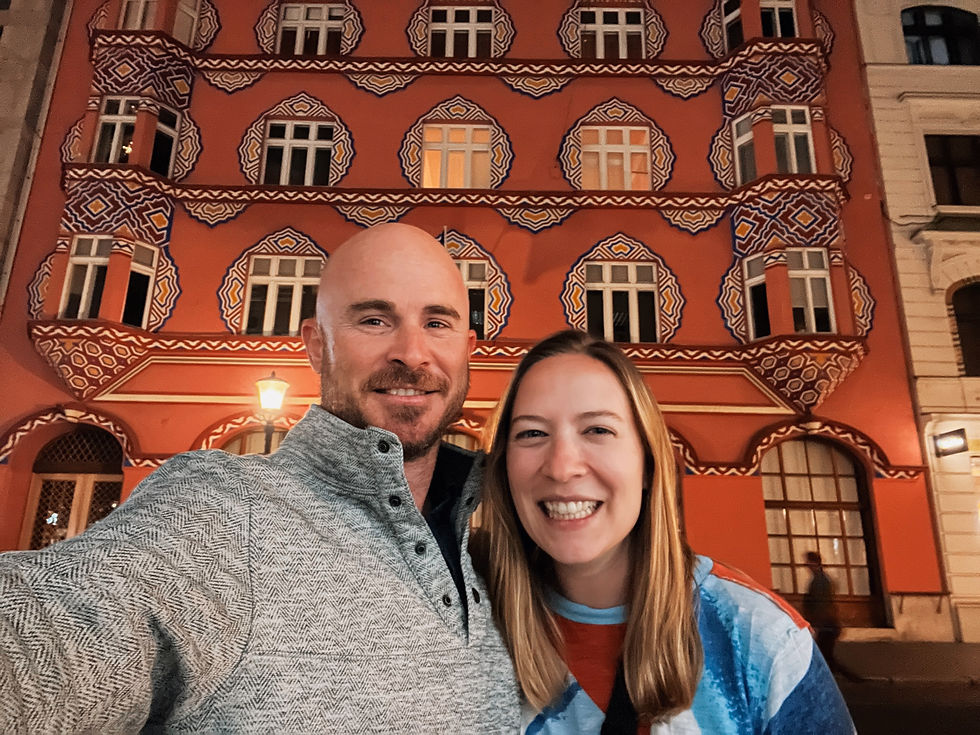
T and I are all about elaborate itineraries that we follow… for a while. We tend to have a plan, begin the plan, then take a major pivot at some point along the way, either because of socio-political events (e.g. a coup in Peru), unique opportunities (e.g. Argentina in the World Cup Finals), or E being a big complainer (e.g. that time it was too hot in the Yucatan). Anyway, that’s how we ended up in Slovenia. We were on a (planned) stop in Venice, Italy, and I noticed that you could take a shuttle bus to Slovenia… so we did!
Read our Essential Guide to Slovenia to learn all the basics to prepare for your trip, then check out our 7-Day Guide to Slovenia, Flash Trip: 3 Days in Ljubljana and Lake Bled, and our favorite places to go in Slovenia!
Your Essential Guide to Slovenia Index
Jump To:
Tell Me About Slovenia!
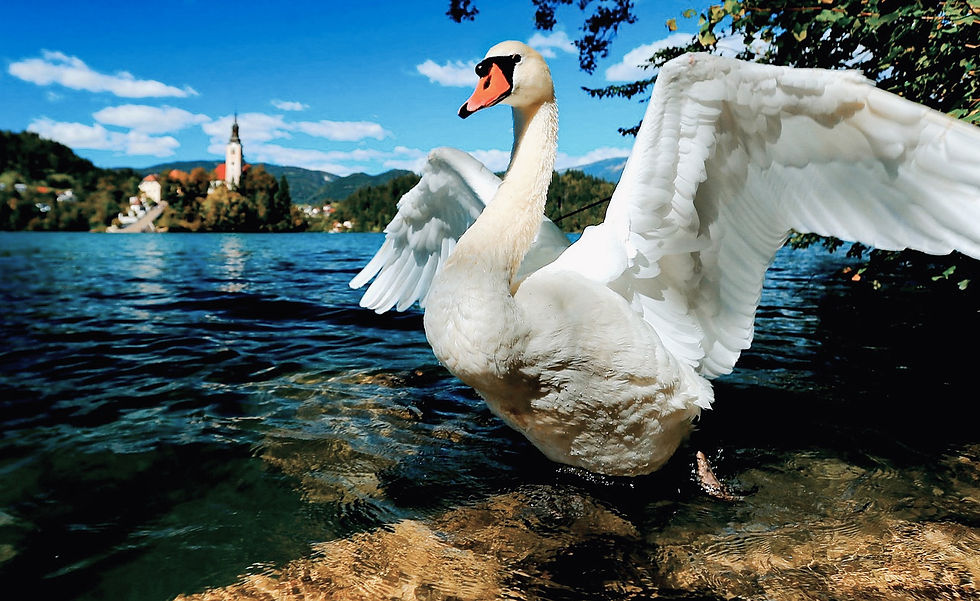
Slovenia has long sat at the crossroads of history. First settled by Celts and Illyrians, it was then absorbed into the Roman Empire (you can still find Roman ruins in unexpected places). After Rome fell, wave after wave of new rulers came through—Slavs, Bavarians, the Holy Roman Empire, the Habsburgs. For a long time, Slovenia was essentially a scenic outpost of someone else’s empire. But after World War I, Slovenia shed its longtime rulers, the once mighty (and now very defeated) Austro-Hungarian Empire. The Slovenes joined the Serbs and Croats in forming a new kingdom, hoping to stand united against Italy’s territorial ambitions. These three peoples created the union of South Slavs: Yugoslavia.
"Tito" (Josip Broz) ruled Yugoslavia from 1945 until his death in 1980. After Tito broke from Stalin in 1948, Yugoslavia was an anomaly among the communist bloc countries, but Slovenia always stood out even within Yugoslavia. Slovenia was the most industrialized and economically developed republic in the federation, with better infrastructure, stronger trade ties with Western Europe, and a more liberal cultural scene. Slovenia shares borders with Italy and Austria, so more Western goods filtered into the country during communist times, like jeans, records, magazines. Slovenes traveled abroad more freely than their southern neighbors. Their educational system was also stronger than the other Slavic nations.
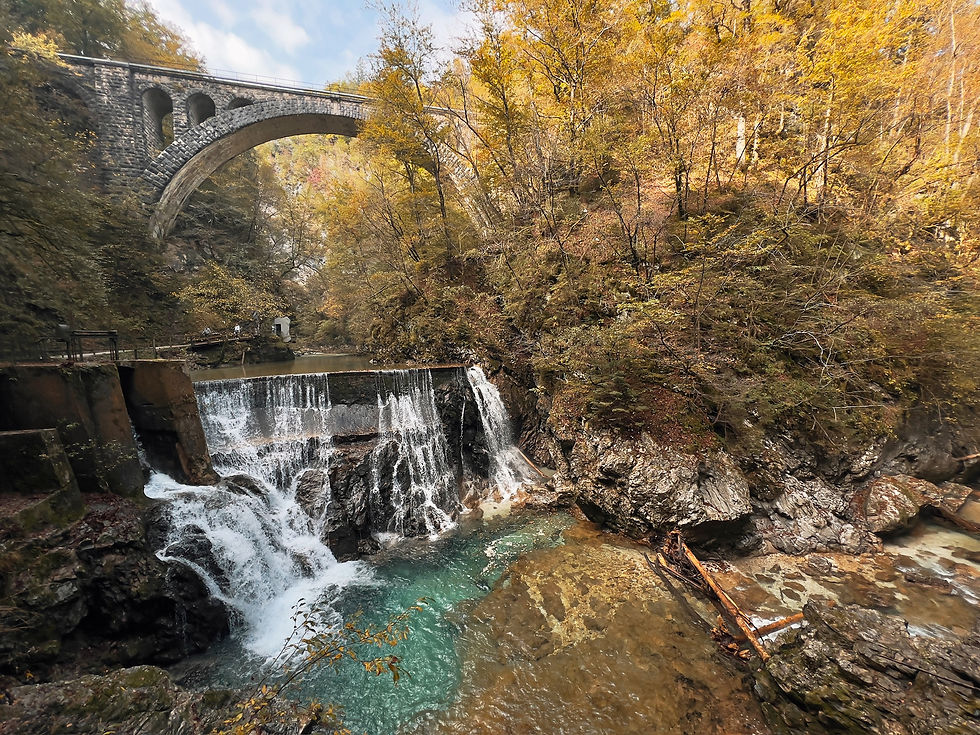
In 1991, Slovenia became the first republic to break away from Yugoslavia, declaring independence with surprising swiftness and minimal conflict compared to its neighbors. Since then, Slovenia has charted its own path, joining the EU in 2004 and becoming one of the continent’s most quietly progressive, eco-friendly, and well-run countries.
These days, Slovenia is a haven for nature lovers, wine drinkers, and travelers eager to explore different corners of Europe beyond Paris, Rome, and Prague (but also… go to Prague!). You can paddle through glassy green rivers, hike picture-perfect mountain trails, or enjoy a glass of wine in charming capital city Ljubljana. We so enjoyed our time in Slovenia and can’t wait to return and explore more corners of the country!
When is the Best Time to Visit Slovenia?

Are we a broken record yet? There’s no bad time to travel, and sometimes school or work schedules dictate the trip. Here’s what you can expect Slovenia’s weather to be like at each time of the year.
June–September: High Season
Warm, tranquil summer is Slovenia’s busiest time, perfect for lake swims, alpine hikes, and strolls through Ljubljana’s café-lined streets. National parks are lush and lively, and the Julian Alps are lookin’ mighty fine. Expect bigger crowds in hot spots like Lake Bled, so book early and plan for popular sites to be busy.
But remember, even in high season Slovenia sees way fewer tourists than other places in Europe. By comparison, in 2023 Paris saw around 48 million tourists, Rome saw 35 million, and all of Slovenia only saw 6.5 million (1.5 million of whom were locals).
Temperatures: Lowlands & Cities (Ljubljana, Lake Bled):
• Highs: 24–30°C (75–86°F)
• Lows: 13–17°C (55–63°F)
Mountains (Triglav National Park, Alpine areas):
• Cooler by ~5–8°C (9–14°F)
• Highs: 18–22°C (64–72°F)
April–May & October: Shoulder Season
Spring and fall are ideal if you want mild weather and fewer people. Wildflowers and green hills make April and May especially lovely, while October brings golden forests and grape harvests in the wine regions (Slovenia has great wine!). The weather is generally pleasant, but you’ll want a light jacket and maybe an umbrella just in case.
Temperatures: Spring (April–May):
• Highs: 14–22°C (57–72°F)
• Lows: 5–11°C (41–52°F)
Fall (October):
• Highs: 13–18°C (55–64°F)
• Lows: 4–9°C (39–48°F)
November–March: Off Season
Slovenia quiets down in winter, unless you’re into skiing. Outside the ski resorts, it’s a calm, cozy time to visit. Prices are lower, crowds are few, and a snowy castle or thermal spa visit might be just the ticket.
Temperatures:Lowlands (Ljubljana, Maribor):
• Highs: 2–9°C (36–48°F)
• Lows: -3 to 2°C (27–36°F)
Mountains & Ski Areas:
• Sub-zero at night, with highs between -5 to 4°C (23–39°F)
Can I Travel to Slovenia on a Budget?
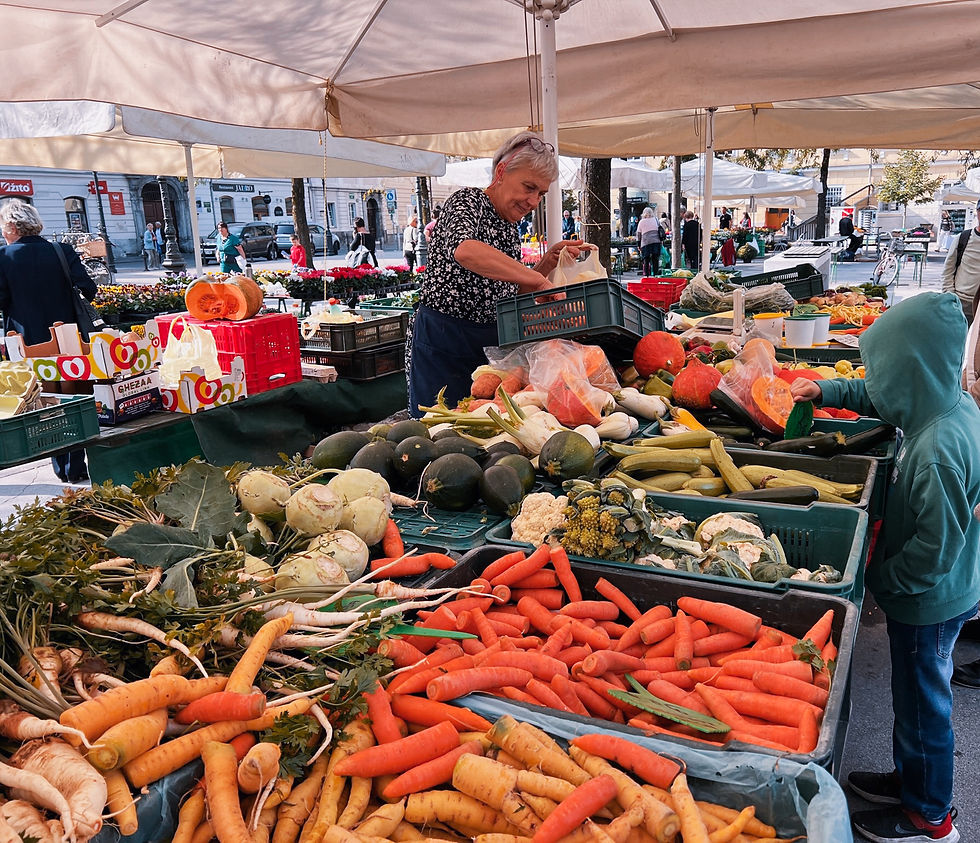
While prices increase all over Europe during popular summer months, we found that Slovenia was pleasantly inexpensive. It’s not quite “cheap” but definitely didn’t break the bank. Expect to spend about $60-$130 a night on lodging (that range reflects the gamut between private rooms in guesthouses and mid-range hotels), $30-$50 on food, and another $20 or so on transport and activities. Public buses and trains are affordable, and many of Slovenia’s top experiences (hiking, lakeside picnics, or wandering historic towns) are low-cost or totally free.
Your money will go a long way here, especially if you avoid peak summer weekends in popular spots like Lake Bled.
If you really want to have a budget-friendly, local experience, try staying at one of over 400 “tourist farms:” working farms where you can room and board, with hearty local meals included, for as little as €60/night.
Can I Get By with English in Slovenia?
Short answer: yes. We found English to be fairly ubiquitous in the tourist enclaves, or at least enough English to convey what we wanted to buy/eat etc. Though we didn’t stray too far into small villages during our visit where we might perhaps have had more difficulty, we found communicating in English to be no problem.
What Are Some Basic Words and Phrases in Slovenian?
Here's your intro to Slovenian guide!
· Živjo (ZHEE-vyoh) – Hello
· Dobro jutro (DOH-broh YOO-troh) – Good morning
· Dober dan (DOH-behr dahn) – Good afternoon
· Dober večer (DOH-behr veh-CHER) – Good evening / Good night
· Adijo / Nasvidenje (ah-DEE-yoh / nah-svee-DEN-yeh) – Bye / Goodbye
· Prosim (PROH-seem) – Please
· Hvala (HVAH-lah) – Thank you
· Ni za kaj (nee zah KAI) – You’re welcome
· Oprostite / Se opravičujem (oh-PROH-stee-teh / seh oh-prah-VEE-choo-yehm) – Excuse me / Sorry
· Kje je…? (kyeh yeh…?) – Where is…?
· Koliko stane? (KOH-lee-koh STAH-neh?) – How much does it cost?
· Ne govorim slovensko (neh goh-VOH-reem slo-VEHN-skoh) – I don’t speak Slovenian
· Govorite angleško? (goh-voh-REE-teh ahn-GLESH-koh?) – Do you speak English?
· Voda (VOH-dah) – Water
· Kava (KAH-vah) – Coffee
· Pivo (PEE-voh) – Beer
How do You Travel Around Slovenia?
Rental Car: If you’re traveling with kids or just like to have more control over your itinerary, we always recommend renting a car. If you arrive in Slovenia and rent a car just for your time in-country, it’s very straightforward – most of the rental agencies have lots at the airport and downtown. Slovenia has nice roads and an easy pace, so you’ll find driving around the country a breeze.
WS&T Travel Tip: You must get a toll sticker to drive on Slovenia’s highways. The sticker is called a vinjeta (veen-YEH-tah), which you can pay for by the week (€15) or by the month (€30). If you rent a car in Slovenia, make sure it comes with the sticker. If you drive in from another country, purchase one right away at a gas station, post office, or market. You can also buy one as you approach the border, or you can buy one online here: If you don’t have one, you will get a big fine.
If you are interested in renting a car to travel between countries in the region, make sure that the rental car company will allow you to travel to the countries on your list. Generally, if you’re traveling between EU countries you should be fine. Make sure your vehicle has its registration card and proof of insurance, also potentially called a “cross border card.”
Green Card There’s also a proof of vehicle insurance called a Green Card, which you might need for certain countries on your route. As of this writing, you need a Green Card for: Albania, Azerbaijan, Morocco, Moldova, North Macedonia, Tunisia, Turkey and Ukraine. Look into how you can obtain one either from your own insurance or potentially from the rental car company. You might need to call your chosen rental car company directly; info is a little scant on this piece of international bureaucracy. Some places online say that you need a green card to enter Bosnia, Serbia, and Montenegro, but most agree that you don’t need the Green Card for these countries. But, don’t worry – if you don’t have a Green Card and can’t obtain one prior to travel, you just might be required to purchase additional insurance upon entering certain countries.
The Green Card reminds me of another impossibly vague piece of global admin: the International Driver’s License. Please see T’s article for a breakdown (and a good laugh).
Bus, Train, and Shared Shuttle Service: Slovenia also has many options for all three of these forms of transportation. We opted out of the rental car and took the FlixBus or walked everywhere; it was easy and inexpensive. More on specific routes in our itineraries!
What Are Some of the Top Sights in Slovenia?
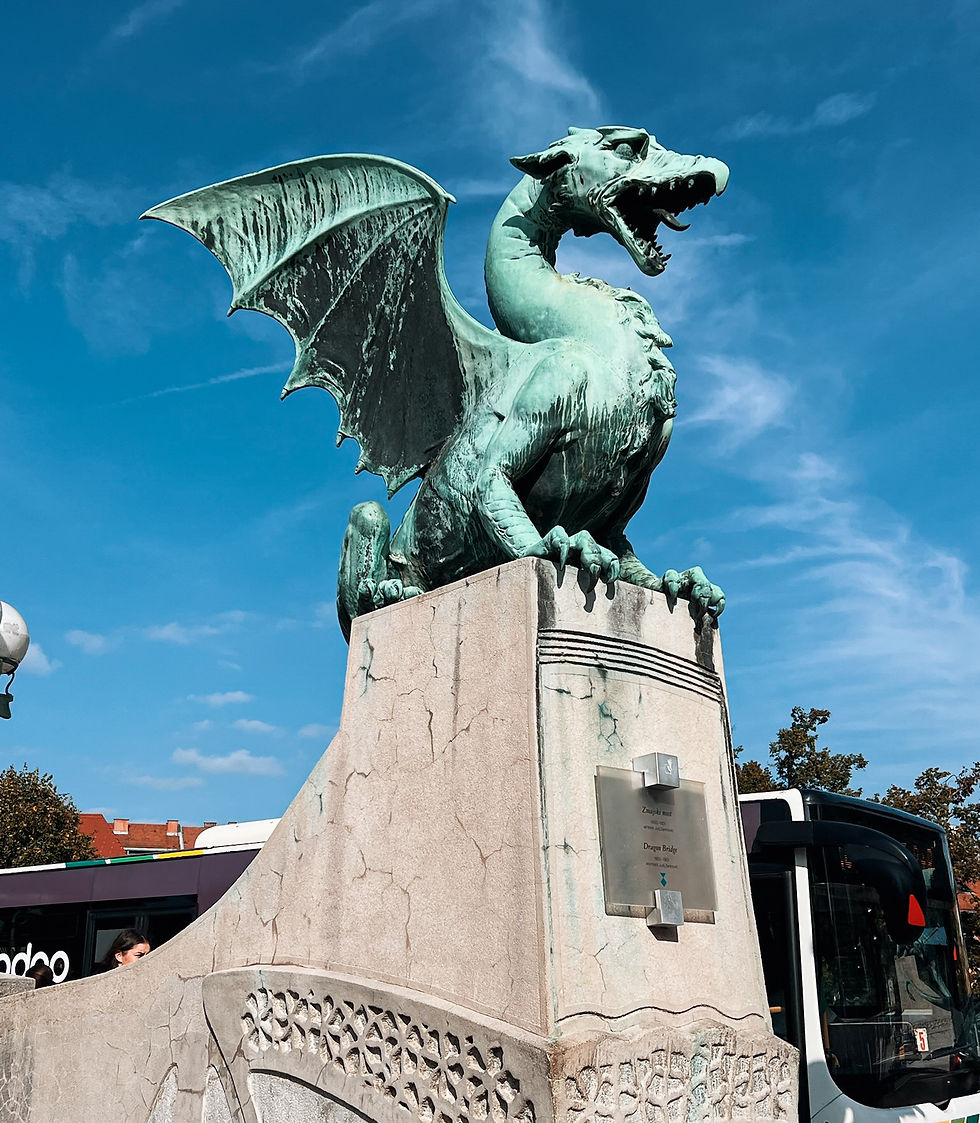
Ljubljana
Wander Slovenia’s quiet but super charming capital city. We loved the farmer’s market, cathedrals, and restaurants.
Explore the Underground
• Tour the jaw-dropping Postojna Cave.
• See Predjama Castle, built right into a cliffside cave.
• Visit Škocjan Caves, a UNESCO World Heritage site with one of the world’s largest underground canyons.
Lake Bled
• Rent a rowboat or hop in a pletna (traditional boat) to reach Bled Island and its postcard-perfect church.
• Walk the 6 km trail around the lake. We actually did this two days in a row, we liked it so much.
• Hike up to Ojstrica or Mala Osojnica for one of Europe’s most photographed views.
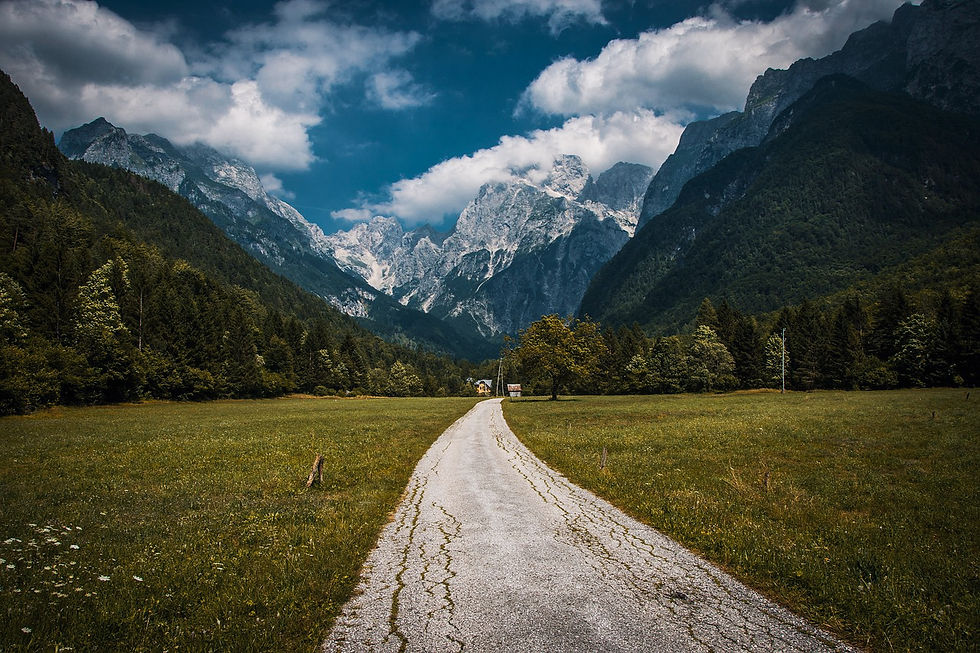
Hit the Mountains
• Base yourself in Lake Bohinj or Kranjska Gora for hikes in Triglav National Park, Slovenia’s crown jewel. You can even climb Mount Triglav, a Slovene rite-of-passage.
• Take the cable car up Mount Vogel for panoramic alpine views and skiing in the winter.
Try the Wine
• Explore Goriška Brda, Slovenia’s version of Tuscany, with rolling hills and boutique wineries.
• Sample crisp whites in Podravje or try the funky orange wines of the Vipava Valley.
• Many tastings take place in family-run cellars where folks are wine-obsessed and very unpretetentous.

Visit Charming Towns and Villages
• Take a trip to Ptuj, Slovenia’s oldest town, with medieval vibes and a great castle museum.
• Don’t miss Piran on the coast—red rooftops, Venetian charm, and sunsets over the Adriatic.
Nature Galore
• Raft or zipline in the Soča Valley, known for its emerald river and epic outdoor sports.
• Cycle through countryside dotted with castles, vineyards, and sleepy villages.
• Swim, paddleboard, or just lay on a rock at Lake Bohinj, the peaceful cousin to Bled.
Slow Down and Eat!
• Take the scenic route—literally. Slovenia’s backroads are full of wildflowers, stone barns, and vineyard views.
• There’s tons of great food to try, from tradtional Slovenian dishes to handmade pastas and pizzas to weirdly the best Middle Eastern I’ve had in a while. Don’t forget the wine and cheese.
What Should I Eat and Drink in Slovenia?
Slovenian food is a hearty yet craveable mix of Italian, German, and Balkan influences, with many twists on regional specialties and few delicacies unique to the country.
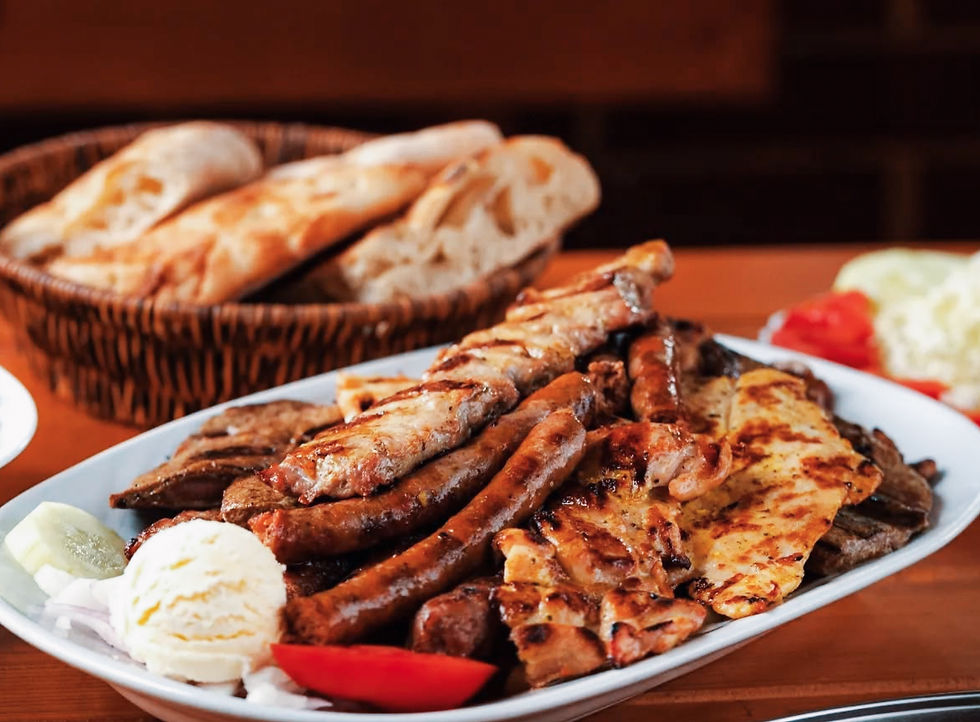
You’ll find these Balkan classics frequently:
Burek (BOO-rehk): A savory phyllo-dough pastry which you can find with a variety of fillings, including cheese, spinach, and meat. Very similar to spanakopita, and super popular in Slovenia and the whole region.
Mixed Grill (No phonetics needed): Much meat! Many veg! This is the Balkan version of a tasty cookout, featuring meat like ćevapi (che-VAH-pee): a sausage-shaped kebab of minced lamb/beef, pljeskavica (plehs-ka-VEET-sah): the patty-shaped version, ražnijići (RAZH-nyee-chee): steak skewers, pileći (PIL-eh-chi): chicken, sudžukice: sausages, and ćufte: meatballs. These meats will come with a variety of breads and grilled onions/peppers, depending on the style. Many Slovenian dishes are also served with porridge like grains (usually buckwheat or barley).
Ajvar (EYE-var): A ubiquitous condiment made of roasted sweet red peppers and eggplants. Delicious enough for me to ignore my nightshade sensitivity (oy) for the duration of the trip.
You’ll also find a host of cuisines borrowed and reinterpreted, like Italian pizza, Hungarian classics like goulash, and German fare (sausages, schnitzels, strudels, and sauerkraut – oh my!).
Some other Slovenian delicacies to look out for:
Štruklji (SHTROOK-yee): A kind of dumpling or rolled pastry and can be either sweet or savory, boiled or baked. Traditionally stuffed with one of the following: cottage cheese (skuta), walnuts, apples, tarragon, poppy seeds, herbed cheese, or sometimes meat.
Jota (YOH-tah): A thick, tangy stew made with sauerkraut or sour turnip, beans, potatoes, and often some kind of smoked meat.
Pršut (prshut): Slovenian prosciutto from the Karst region.
What’s Up with Slovenian Wines?
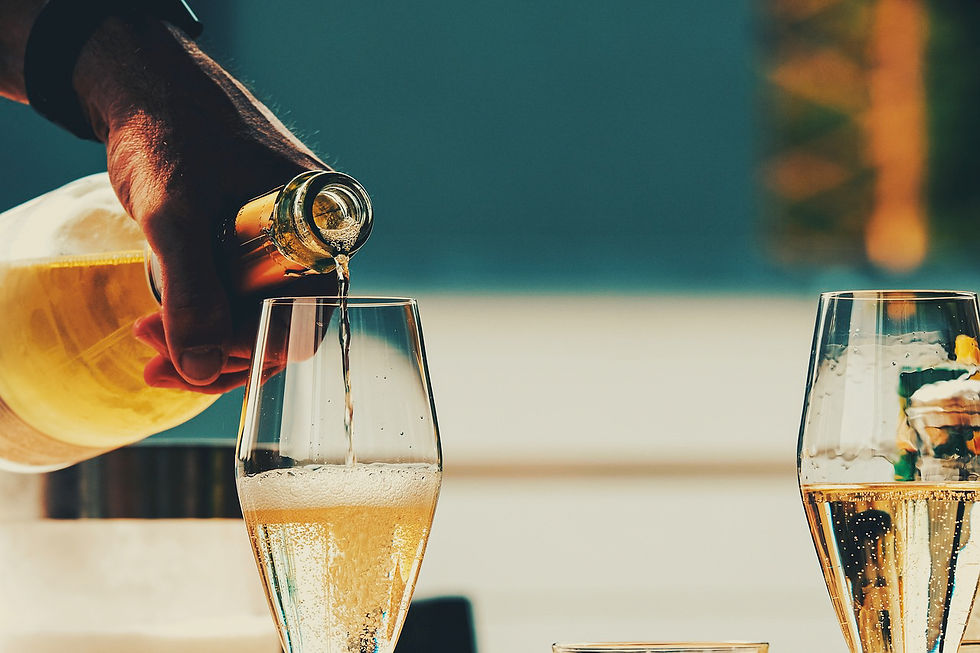
One of my favorite topics! Slovenian wine is a hidden gem in the world of viticulture. With 2500 years of winemaking history and an array of microclimates, Slovenia punches well above its weight wine-wise (say that 10 times fast).
Slovenia has three distinct wine regions:
Primorska (Coastal Region) lies along the Italian border and enjoys a Mediterranean climate, making it ideal for bold reds and crisp, mineral-driven whites. It’s known for varietals like Rebula (Ribolla Gialla), Malvazija (Malvasia), and rich Merlots and Cabernets. The Vipava Valley is especially notable for its experimental orange wines (I love an orange wine!) and native grapes like Zelen and Pinela.
Podravje (Drava Region) in eastern Slovenia is the country’s largest wine region, specializing in elegant, aromatic white wines such as Šipon (Furmint), Laški Rizling (Welschriesling), and Sauvignon Blanc. This region is also known for its excellent late-harvest and sweet wines, thanks to the cooler climate.
Posavje (Sava Region) is located in the hills and valleys of southeastern Slovenia and is known for producing accessible, everyday wines. It’s home to Cviček, a unique low-alcohol and slightly sour red blend. The region also produces dry whites and sparkling wines, and many vineyards here continue to follow traditional winemaking methods.
Okay, hopefully this has convinced you that Slovenia is a special place and WELL worth your time! Now, on to our detailed itineraries: 7 Unexpected Days in Slovenia, and a Flash Trip: 3 Charming Days in Ljubljana and Lake Bled!
Making Memories? Click below to check out some curated picks for keeping those memories safe when traveling with (and without) small children.
Visit GEAR UP For More Outstanding Travel Essentials
Copyright © WS&T. All rights reserved.













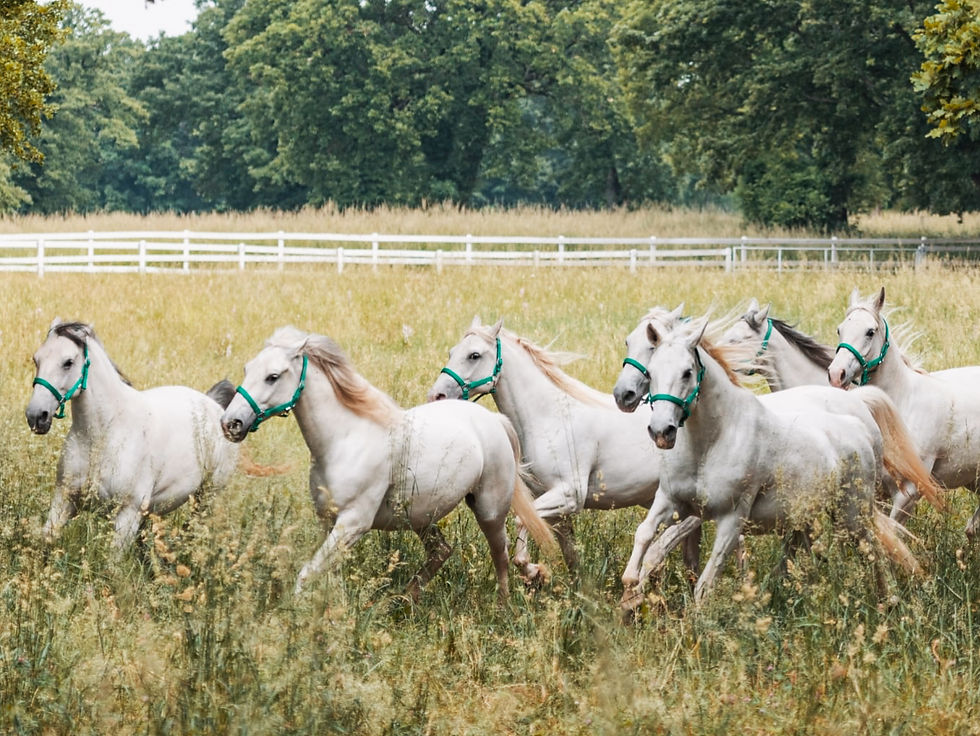
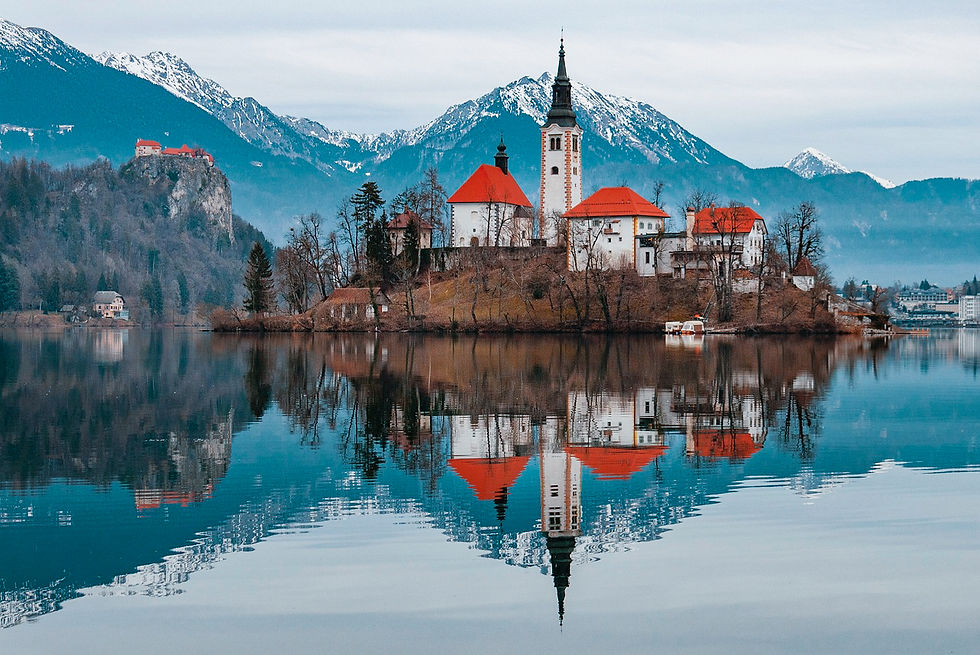
Comments